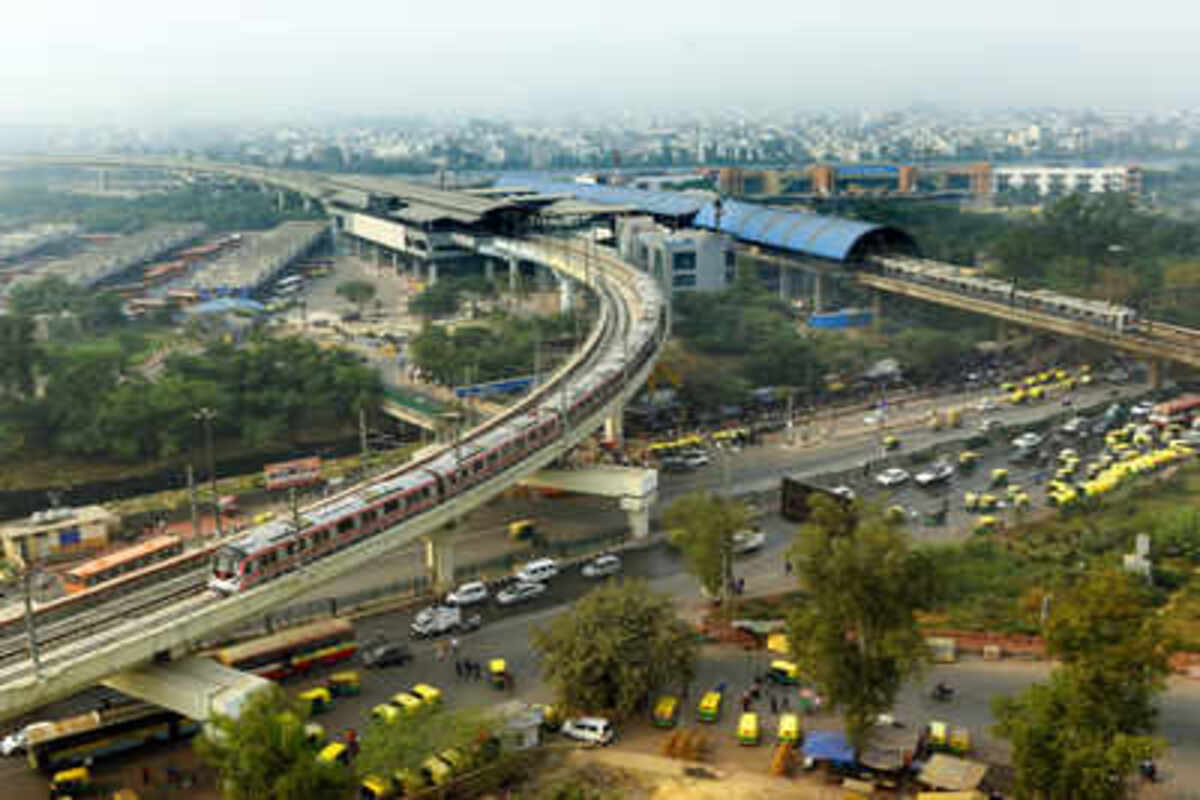106 shuttle buses, 60 more Metro trips to combat air pollution in Delhi
The decision came during a high-level meeting Rai held with the officials on the implementation of GRAP-III restrictions in the city.
On this very day back in the year 2002, the then Prime Minister, Atal Bihari Vajpayee, had inaugurated the first stretch of the Delhi Metro from Shahdara to Tis Hazari on the Red Line.
Nikhil Vyas | New Delhi | December 24, 2023 9:09 pm

On this very day back in the year 2002, the then Prime Minister, Atal Bihari Vajpayee, had inaugurated the first stretch of the Delhi Metro from Shahdara to Tis Hazari on the Red Line. Since then, the Delhi Metro has emerged as the lifeline of the city of Delhi and the entire National Capital Region.
“From an inaugural network length of just 8.4 kilometres with six stations in 2002, the Delhi Metro stands tall today with a network of 393 kilometres and 288 stations. More than six million passenger journeys are being performed every single day on the Delhi Metro making it one of the largest mass transit systems in the entire world,” a Delhi Metro Rail Corporation (DMRC) spokesperson said.
Advertisement
The Delhi Metro is also one of the fastest-expanding Metro networks in the world. In the last 21 years, more than 380 kilometres of additional lines have been laid in the NCR, which is a staggering feat and probably, the biggest infrastructure marvel created in the country. In addition, another 65 kilometres of new lines are currently being laid across the national capital, which will take the network length beyond 400 kilometres in the days to come.
The year 2023 was also a year of achievements for the Delhi Metro Rail Corporation.
From September 17 onwards, the DMRC started to operate the Airport Express Line at a massive speed of 120 kilometres per hour (KMPH). This historic increase in the speed of India’s fastest Metro corridor gradually from 90 KMPH to 120 KMPH was made possible by meticulous planning and time-bound implementation by DMRC’s engineers in consultation with several other government agencies and domain experts.
The total journey from New Delhi to Yashobhoomi Dwarka Sector-25 now takes about 21 minutes. Earlier the travel time between New Delhi and Dwarka Sector–21 was approximately 22 minutes and now it has reduced to around 19 minutes between these two stations, leading to a saving of 3 minutes. The approximate travel time between New Delhi and Terminal–3 Airport is about 15 minutes and 30 seconds. Earlier, it was a little more than 18 minutes.
On this very day, Prime Minister Narendra Modi inaugurated the Dwarka Sector 21 – Yashobhoomi Dwarka Sector 25 extension of the Airport Express Line, which now provides the Yashobhoomi Convention Centre with Metro connectivity.
The vision of DMRC is ‘Commuting experience in Delhi Metro to be customer’s delight’. Recognising that purchasing tickets is a pivotal part of the overall commuting experience, DMRC has introduced a strategic initiative to ‘digitally transform the ticketing process’ aimed at enhancing the ‘ease of booking’ of tickets for all Delhi Metro travelers.
Under this initiative, DMRC introduced several new digital ticketing solutions that have made ticketing extremely convenient. While the entire system was made compliant with the National Common Mobility Cards, a QR code-based ticketing system was also introduced whereby now commuters can purchase both QR code paper tickets or QR code tickets on the app. DMRC introduced WhatsApp-based ticketing, tickets on PayTM so that passengers could buy QR tickets even before they reach a Metro station. To promote digital payments, DMRC introduced payments through UPI at TVMs and TOMs.
On November 1, the Delhi Metro achieved a significant milestone with the launch of ‘Momentum 2.0,’ an innovative platform set to redefine the daily commuting experience for millions in the National Capital Region (NCR). The app provides instant and direct access to services such as Integrated QR Ticketing (mainline and airport line), a wide array of e-shopping choices, digital lockers for quick and safe deliveries, Smart Utility Payments and last-mile connectivity options.
Through another initiative called “CarbonLite Metro Travel”, passengers now are informed about the average amount of Carbon Dioxide (CO2) emissions they save during their metro journeys in comparison to road-based motor vehicles. This enlightening statistic is prominently displayed on both paper and mobile QR tickets, ensuring widespread awareness of the positive impact of sustainable public transport.
On September 4, the Delhi Metro recorded 71.03 lakh passenger journeys, which is the highest ever for the mass transit system. This was a significant achievement which indicates that the Delhi Metro has been able to reinstate itself as the mass transportation backbone of the entire NCR after the challenges posed to public mobility by the Covid-19 pandemic.
Advertisement
The decision came during a high-level meeting Rai held with the officials on the implementation of GRAP-III restrictions in the city.
The Delhi Metro customers will now be able to book their bike taxi rides from Delhi Metro’s official mobile app, DMRC Momentum (Delhi Sarthi 2.0) itself without the need to juggle between multiple apps.
Amid continuing poor air quality in the national capital, doctors on Wednesday reported a rise in digestive issues like Irritable Bowel Syndrome (IBS) and Inflammatory Bowel Disease (IBD).
Advertisement
